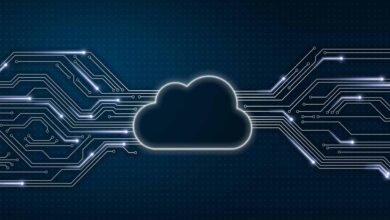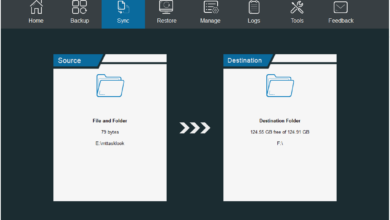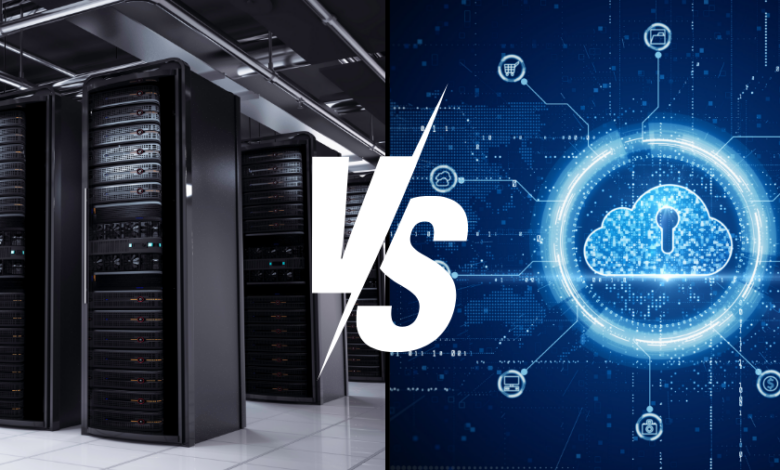
Data Security Data Center vs. Cloud
Data security in traditional data centre vs cloud environments is a hot topic, and for good reason! We’re constantly generating and storing more data, making the choice between on-premise security and the cloud a critical decision for businesses of all sizes. This post dives into the key differences, exploring everything from physical security and encryption to network architecture and compliance.
Get ready to navigate the complexities of protecting your valuable information, no matter where it resides.
Choosing between a traditional data center and a cloud-based solution involves a careful weighing of pros and cons regarding data security. This comparison will help you understand the unique challenges and advantages of each approach, empowering you to make informed decisions about protecting your sensitive data. We’ll explore the various layers of security, highlighting the strengths and weaknesses of each environment to help you determine the best fit for your specific needs and risk tolerance.
Physical Security Comparisons
Data security isn’t just about firewalls and encryption; it’s also about the physical protection of your infrastructure. Traditional data centers and cloud environments differ significantly in their approaches to physical security, impacting the overall resilience and confidentiality of your data. This section will delve into the key differences in physical access controls, environmental controls, and staff management.
Data security in traditional data centers relies heavily on perimeter defenses, a stark contrast to the distributed nature of cloud environments. The shift to the cloud necessitates a different approach, and that’s where tools like cloud security posture management (CSPM) become crucial. Check out this great article on bitglass and the rise of cloud security posture management to understand how this helps.
Ultimately, securing data, whether on-premise or in the cloud, demands a proactive and adaptable strategy.
Physical Access Control Measures
Traditional data centers and cloud environments employ different strategies for controlling physical access. The table below highlights these differences:
| Security Measure | Traditional Data Center | Cloud Environment | Comparative Notes |
|---|---|---|---|
| Perimeter Security | Fencing, security guards, CCTV surveillance, possibly mantrap systems. | Highly secured data centers owned and managed by cloud providers, often with multiple layers of physical security including biometric access and advanced surveillance. | Cloud providers invest heavily in perimeter security, often exceeding the capabilities of individual organizations. |
| Surveillance | CCTV cameras, possibly with intrusion detection systems. | Comprehensive CCTV coverage, often integrated with advanced analytics for threat detection and response. | Cloud providers typically have more sophisticated surveillance systems with real-time monitoring and alerts. |
| Biometric Access | May be used for access to specific areas, but not always standard. | Frequently employed for access control to sensitive areas within the data center. | Biometrics offer a stronger layer of security than traditional keycard systems. |
| Access Control Systems | Keycard systems, often managed internally. | Sophisticated access control systems managed by the cloud provider, with detailed audit trails. | Cloud providers’ access control systems often provide greater granularity and accountability. |
Environmental Controls and Their Impact on Data Security
Maintaining stable environmental conditions is crucial for data center operation and security. Fluctuations in temperature and humidity can lead to hardware malfunctions, data loss, and security breaches. Traditional data centers typically rely on on-site HVAC systems, while cloud providers manage these conditions across large, geographically dispersed data centers. Power outages are a significant concern in both environments, with traditional data centers often relying on backup generators and uninterruptible power supplies (UPS).
Cloud environments leverage redundancy and geographically distributed data centers to mitigate the impact of power failures. Consistent environmental control in both environments minimizes the risk of hardware failure and data corruption, thereby enhancing data security. However, the scale and sophistication of environmental controls tend to be significantly greater in large cloud data centers.
On-Site Staff Access and Management
Traditional data centers require on-site staff for maintenance, troubleshooting, and other tasks. This presents inherent security risks, as unauthorized access or insider threats become more likely. Rigorous background checks and access control measures are crucial to mitigate these risks. In contrast, cloud environments minimize on-site staff access. Maintenance and management are largely handled remotely by the cloud provider, reducing the potential for human error and unauthorized access.
This distributed access model offers enhanced security by limiting physical access to sensitive infrastructure. While cloud providers have their own internal security risks, the reduced reliance on on-site personnel significantly diminishes the potential for physical security breaches compared to traditional data centers.
Data Encryption and Key Management: Data Security In Traditional Data Centre Vs Cloud Environments
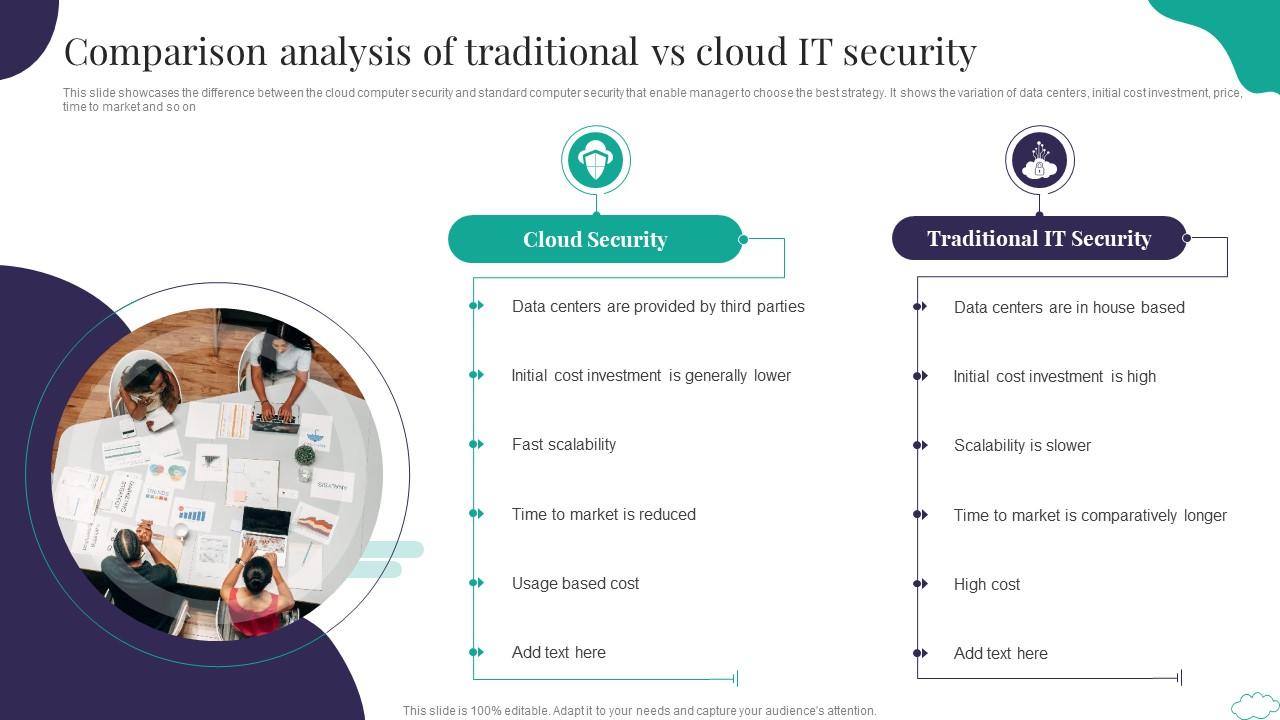
Data encryption and robust key management are cornerstones of a comprehensive data security strategy, differing significantly between traditional data centers and cloud environments. While both aim to protect data confidentiality and integrity, the approaches, challenges, and solutions vary considerably due to the inherent differences in infrastructure and responsibility models. Understanding these nuances is crucial for organizations choosing between these deployment models or adopting a hybrid approach.
Encryption methods and key management practices are fundamental in safeguarding sensitive data. The choice of encryption algorithm, key length, and key management strategy significantly impacts the overall security posture. In both traditional data centers and cloud environments, the goal is the same: to render data unintelligible to unauthorized parties. However, the implementation and management of these security measures differ substantially.
Encryption Methods in Traditional Data Centers and Cloud Environments
The choice of encryption algorithm depends on several factors, including the sensitivity of the data, the computational resources available, and compliance requirements. Both traditional data centers and cloud environments utilize a range of encryption methods, but their deployment and management differ.
- Traditional Data Centers: Often rely on disk-level encryption (e.g., using BitLocker or LUKS), file-level encryption (e.g., using PGP or VeraCrypt), and database encryption (e.g., Transparent Data Encryption (TDE) in SQL Server). Hardware Security Modules (HSMs) are frequently used for key storage and management.
- Cloud Environments: Leverage cloud provider-managed encryption services (e.g., AWS KMS, Azure Key Vault, Google Cloud KMS) for data at rest and in transit. These services often integrate with other cloud services, simplifying management. Customer-managed encryption keys (CMEK) allow for greater control over key management, while provider-managed keys offer convenience and ease of use.
- Common Algorithms: AES (Advanced Encryption Standard) with various key lengths (128, 192, 256 bits) is prevalent in both environments. Other algorithms like RSA (Rivest-Shamir-Adleman) are used for key exchange and digital signatures.
Key Management and Access Control Challenges
Effective key management is paramount; a compromised key renders encryption useless. Both environments face unique challenges in managing and controlling access to these critical assets.
| Aspect | Traditional Data Center | Cloud Environment | Comparison |
|---|---|---|---|
| Key Storage | On-premises HSMs, dedicated servers, potentially less scalable | Cloud provider’s KMS, potentially more scalable and geographically distributed | Cloud offers scalability advantages but introduces reliance on a third party. |
| Key Rotation | Manual processes, potentially prone to errors and inconsistencies | Automated key rotation capabilities, reducing manual intervention and risk | Cloud offers automation benefits for improved security and compliance. |
| Access Control | Role-Based Access Control (RBAC) implemented through local systems, requiring meticulous configuration | Leverages cloud provider’s IAM (Identity and Access Management) system, offering centralized control and granular permissions | Cloud IAM systems generally offer more advanced and refined access control features. |
| Auditing and Logging | Requires dedicated logging and monitoring systems, potentially complex to implement and maintain | Cloud providers typically provide comprehensive audit logs and monitoring capabilities | Cloud providers simplify auditing and compliance reporting. |
Hypothetical Data Breach Scenario and Mitigation
Let’s imagine a scenario where a malicious actor gains unauthorized access to a database containing sensitive customer information. We’ll examine how encryption and key management practices would mitigate the impact in both environments.
Scenario: A disgruntled employee uploads malware to a server, granting attackers access to a database containing customer Personally Identifiable Information (PII).
Traditional Data Center: If the database employed TDE with keys securely stored in an HSM, the attacker would only gain access to encrypted data. Even if the attacker compromised the server, decrypting the data without the keys stored in the HSM would be extremely difficult, significantly limiting the damage. Regular key rotation further minimizes the window of vulnerability.
Cloud Environment: If the database used a cloud provider’s managed encryption service with CMEK, the attacker would still only have access to encrypted data. Because the keys are not directly accessible to the cloud provider, the attacker would need to compromise the customer’s key management infrastructure, a significantly harder task. The cloud provider’s audit logs would also help in identifying the breach quickly and efficiently.
In both cases, strong encryption and secure key management practices significantly limit the impact of a data breach by rendering the stolen data unusable without the proper decryption keys. However, the specific implementation and management practices within each environment influence the effectiveness of these safeguards.
Network Security Differences

Network security in traditional data centers and cloud environments differs significantly, primarily due to the inherent architectural distinctions. Traditional data centers rely on on-premise hardware and meticulously controlled physical access, while cloud environments leverage shared infrastructure and virtualization, introducing unique security challenges and opportunities. Understanding these differences is crucial for effective security posture management.Traditional data centers generally employ a perimeter-based security model, focusing on securing the network boundary.
Cloud environments, however, often adopt a more distributed security model, relying on a combination of perimeter and internal security controls. This shift necessitates a different approach to network security management.
Firewall Implementations
Firewalls are a cornerstone of network security in both environments. In traditional data centers, firewalls are typically physical appliances placed at the network perimeter, controlling traffic flow between the internal network and the external internet. Cloud environments, however, offer virtual firewalls, often integrated into the cloud provider’s infrastructure, allowing for granular control over traffic within the virtual network. These virtual firewalls are scalable and can be easily provisioned and de-provisioned as needed.
A key difference is the management responsibility; in a traditional data center, the organization is fully responsible for firewall management, while in a cloud environment, some aspects might be shared with the provider. This shared responsibility model is a critical factor to consider.
Intrusion Detection and Prevention Systems
Intrusion detection and prevention systems (IDPS) play a vital role in monitoring network traffic for malicious activity. In traditional data centers, IDPS are often deployed as dedicated hardware appliances, analyzing network traffic for known attack signatures and anomalies. Cloud environments offer various IDPS solutions, including virtual appliances, cloud-native services, and security information and event management (SIEM) tools. These cloud-based IDPS solutions often integrate with other cloud security services, providing a more holistic security approach.
The scalability and ease of deployment of cloud-based IDPS are significant advantages, but the reliance on the cloud provider’s infrastructure also introduces potential vulnerabilities.
Environment-Specific Vulnerabilities, Data security in traditional data centre vs cloud environments
The following are vulnerabilities specific to each environment:
- Traditional Data Centers:
- Physical security breaches: Unauthorized physical access to the data center can lead to theft of hardware, data breaches, or sabotage. For example, an attacker gaining physical access could install a malicious device to intercept network traffic.
- Misconfiguration of on-premise firewalls and IDPS: Incorrectly configured firewalls can leave critical systems vulnerable to attacks. For instance, an improperly configured firewall rule could allow unauthorized access to internal servers.
- Lack of network segmentation: Insufficient network segmentation can allow attackers to move laterally within the network after gaining initial access.
- Cloud Environments:
- Misconfiguration of cloud security services: Improperly configured virtual firewalls, cloud-based IDPS, or other security services can expose vulnerabilities. A misconfigured security group in AWS, for example, could allow unauthorized access to an EC2 instance.
- Data breaches due to shared infrastructure: The shared nature of cloud infrastructure can expose organizations to vulnerabilities if other tenants are compromised. A compromised tenant on a shared physical host could potentially gain access to another tenant’s data.
- Lack of visibility and control: Organizations may have limited visibility into the underlying infrastructure in some cloud environments, making it difficult to detect and respond to security incidents.
Best Practices for Securing Network Connections
Effective network security requires a multi-layered approach:
- Traditional Data Centers:
- Implement robust physical security measures, including access control, surveillance, and intrusion detection systems.
- Regularly update and patch firewall and IDPS software.
- Employ network segmentation to isolate critical systems.
- Implement strong network access control policies.
- Cloud Environments:
- Leverage cloud-native security services, such as virtual firewalls, IDPS, and SIEM.
- Implement strong access control policies using identity and access management (IAM) systems.
- Regularly review and update cloud security configurations.
- Utilize cloud security posture management (CSPM) tools to monitor security compliance.
- Employ micro-segmentation techniques to isolate workloads within the cloud environment.
Data Loss Prevention (DLP) Strategies
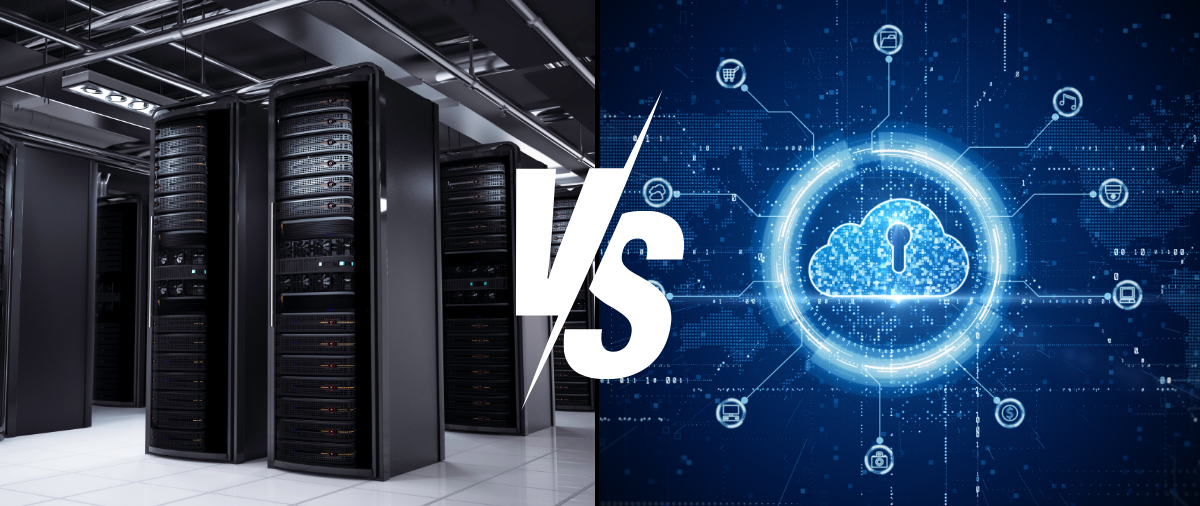
Data loss prevention (DLP) is crucial in both traditional data centers and cloud environments, though the approaches and technologies differ significantly. Effective DLP requires a multi-layered strategy encompassing technical controls, policies, and employee training. The effectiveness of these strategies hinges on understanding the unique vulnerabilities and strengths of each environment.
Traditional data centers and cloud environments present distinct challenges in preventing data loss. On-premises solutions often rely on physical security and internal network controls, while cloud solutions leverage vendor-provided security features and rely heavily on access control and encryption. Understanding these differences is key to implementing effective DLP strategies.
Data Loss Prevention Strategies Comparison
The table below summarizes key differences in DLP strategies between traditional data centers and cloud environments.
| Feature | Traditional Data Center | Cloud Environment | Key Differences |
|---|---|---|---|
| Perimeter Security | Physical security (e.g., fences, guards, access controls), network firewalls, intrusion detection systems. | Virtualized network security, cloud provider’s security infrastructure (e.g., firewalls, intrusion detection/prevention systems), access control lists. | Cloud relies more on virtualized security; physical security is less directly relevant. |
| Data Encryption | Disk encryption, database encryption, in-transit encryption (SSL/TLS). Often managed internally. | Data encryption at rest and in transit, often managed by the cloud provider with options for customer-managed keys. | Cloud providers often offer managed encryption services, simplifying management but potentially reducing control. |
| Data Loss Prevention Tools | On-premises DLP solutions, often integrated with existing security infrastructure. | Cloud-based DLP solutions, integrated with cloud services or offered as independent services. | Cloud-based solutions offer scalability and centralized management but might require integration complexities. |
| Monitoring and Auditing | Internal logging and monitoring systems, often requiring significant manual effort for analysis. | Cloud provider’s logging and monitoring tools, often with enhanced analytics and reporting capabilities. | Cloud providers usually offer more sophisticated monitoring and reporting, simplifying analysis but potentially limiting control over data. |
Data Backups and Recovery
Data backup and recovery are fundamental components of any DLP strategy. However, the implementation and recovery time objectives (RTOs) differ significantly between traditional data centers and cloud environments.
In traditional data centers, backups are typically managed internally, often using tape backups, disk-based systems, or replication to secondary data centers. Recovery times can vary significantly depending on the backup strategy and the scale of the data loss. Restoring from tape backups, for instance, can be a time-consuming process. In contrast, cloud environments offer various backup and recovery services, often with shorter RTOs and RPOs (Recovery Point Objectives).
Cloud providers frequently leverage technologies like snapshotting and replication to ensure rapid data recovery. For example, a company using Amazon S3 might recover data from a recent snapshot within minutes, whereas restoring from tape in a traditional data center might take hours or even days.
Data security’s a huge concern, right? Traditional data centers offer a different security landscape than cloud environments. But regardless of where your data lives, secure application development is key, and that’s where exploring options like those outlined in this fantastic article on domino app dev the low code and pro code future becomes crucial. Ultimately, strong security practices, whether in the cloud or on-premise, depend on well-built, secure applications.
Incident Response and Remediation
Effective incident response and remediation are critical when data loss occurs. The processes involved differ between traditional and cloud environments.
In traditional data centers, incident response often involves a dedicated internal team or external security consultants. The process typically involves identifying the cause of the data loss, containing the breach, eradicating the threat, recovering the data, and implementing measures to prevent future incidents. This process can be complex and time-consuming, particularly if the cause is a sophisticated attack or a major system failure.
Cloud environments often benefit from the cloud provider’s built-in incident response capabilities. Many providers offer 24/7 support and proactive monitoring, which can help identify and address security incidents quickly. While the specific procedures vary by provider, they generally involve collaboration between the customer and the cloud provider to isolate the affected resources, restore data from backups, and investigate the root cause.
The provider often offers tools and services to assist in the investigation and remediation process. For example, AWS offers detailed logging and monitoring services that can be used to identify the source of a data breach.
Compliance and Regulatory Requirements
Navigating the complex landscape of data security compliance is crucial for both traditional data centers and cloud environments. The regulations you must adhere to depend heavily on the type of data you handle and the industries you operate within. Failure to comply can lead to hefty fines, reputational damage, and loss of customer trust. This section compares compliance requirements across these two environments, highlighting the unique challenges and offering a framework for effective auditing.Meeting compliance standards, whether in a traditional data center or a cloud environment, requires a proactive and multifaceted approach.
The responsibility extends beyond simply installing security software; it necessitates a deep understanding of the relevant regulations, consistent monitoring, and a robust auditing process. The inherent differences between these environments present unique hurdles in achieving and maintaining compliance.
Compliance Requirements in Traditional Data Centers and Cloud Environments
The compliance requirements for data security differ significantly between traditional data centers and cloud environments, primarily due to the varying levels of control and responsibility.
- Traditional Data Centers: Compliance often involves meticulous on-premise security management. This includes physical security measures (access control, surveillance), robust network security (firewalls, intrusion detection systems), and data encryption at rest and in transit. Specific regulations like HIPAA (for healthcare data), GDPR (for European citizen data), and PCI DSS (for payment card data) demand rigorous adherence to detailed standards concerning data storage, access, and processing.
Audits are typically conducted on-site, requiring detailed documentation and demonstration of control effectiveness.
- Cloud Environments: While cloud providers often handle the underlying infrastructure security, the responsibility for data security and compliance largely rests with the organization using the cloud services. This shared responsibility model requires a clear understanding of which security controls are managed by the provider and which are the customer’s responsibility. Compliance often involves configuring cloud services to meet specific regulatory requirements, implementing appropriate access controls, and ensuring data encryption.
Audits may involve both on-site assessments of the organization’s security practices and remote assessments of the cloud provider’s infrastructure and security controls. Cloud providers usually provide compliance certifications and audit reports to assist customers with demonstrating compliance.
Challenges in Meeting Compliance Standards
The path to compliance presents distinct challenges for both traditional data centers and cloud environments.
- Traditional Data Centers: Maintaining physical security can be costly and complex, requiring significant investment in infrastructure and personnel. Keeping up with evolving regulations and implementing necessary updates to security systems can also be a resource-intensive endeavor. Comprehensive documentation and auditing processes are essential but can be time-consuming and require specialized expertise.
- Cloud Environments: The shared responsibility model can create confusion regarding accountability for security. Understanding the specific security controls managed by the cloud provider versus the customer is crucial to avoid gaps in security posture. Maintaining visibility into the cloud environment and ensuring proper configuration of cloud services to meet compliance requirements can be challenging. Dependency on third-party providers introduces additional risk and requires careful due diligence and contract negotiation.
Framework for Auditing Security Controls
A robust auditing framework is essential for demonstrating compliance in both traditional data centers and cloud environments. This framework should be comprehensive, encompassing both technical and procedural controls.
- Traditional Data Center Audit Framework: This framework should include regular vulnerability assessments, penetration testing, security audits of physical access controls, and reviews of data access logs. Documentation should be meticulously maintained, including policies, procedures, and evidence of compliance with relevant regulations. The audit should verify the effectiveness of security controls and identify areas for improvement.
- Cloud Environment Audit Framework: This framework should leverage cloud-native auditing tools and integrate with the cloud provider’s compliance reports. Audits should focus on the configuration of cloud services, access control mechanisms, data encryption, and data loss prevention measures. Regular security assessments and penetration testing should be conducted, and appropriate logs should be monitored and analyzed. The audit should also assess the effectiveness of the shared responsibility model and identify any gaps in security.
Cost and Resource Management
Data security is a significant investment, and the cost-benefit analysis differs considerably between traditional data centers and cloud environments. Understanding these differences is crucial for making informed decisions about your organization’s security posture. While initial costs might appear lower in one environment, long-term expenses and hidden costs can easily shift the balance. Let’s delve into the financial and resource implications of securing data in both settings.
The ongoing operational expenses and capital expenditures associated with data security are complex and depend heavily on the scale and specific security requirements of an organization. A small business will have vastly different needs and budgets than a large multinational corporation. This analysis aims to provide a general comparison, highlighting key differences and areas to consider.
Cost Comparison: Traditional Data Center vs. Cloud
The following table compares the costs associated with implementing and maintaining data security measures in traditional data centers and cloud environments. Note that these are general estimates and actual costs can vary widely depending on factors like scale, complexity, and specific vendor choices.
| Cost Category | Traditional Data Center | Cloud Environment | Notes |
|---|---|---|---|
| Hardware (Firewalls, Intrusion Detection Systems, etc.) | High upfront cost, ongoing maintenance and replacement costs. | Generally lower upfront cost; costs are often included in the cloud service agreement or billed separately. | Traditional data centers require significant capital expenditure for hardware. Cloud providers handle hardware maintenance. |
| Software (Security Information and Event Management (SIEM), Endpoint Detection and Response (EDR), etc.) | Licensing costs, maintenance, and upgrades. | Subscription-based model; costs can vary based on usage and features. | Cloud services often offer bundled security software, simplifying management but potentially increasing overall costs. |
| Personnel (Security Engineers, System Administrators) | High salaries and benefits; need for specialized expertise. | May require fewer in-house personnel, depending on the level of managed services utilized. | Cloud providers often handle much of the infrastructure management, reducing the need for dedicated IT staff. |
| Facility Costs (Power, Cooling, Physical Security) | Significant ongoing expenses; costs vary based on location and size. | Generally included in the cloud service agreement; costs are often transparent and predictable. | Cloud providers manage data center facilities, removing this burden from the organization. |
Resource Requirements
The personnel and infrastructure requirements for maintaining data security differ significantly between traditional data centers and cloud environments.
Traditional Data Centers:
- On-site IT staff: System administrators, network engineers, security engineers, and database administrators are essential for managing and maintaining the infrastructure and security systems. The number of staff required depends on the size and complexity of the data center.
- Physical infrastructure: This includes servers, network equipment, firewalls, intrusion detection systems, power backup systems, and climate control systems. Significant capital investment is required for initial setup and ongoing maintenance.
- Specialized security tools: Organizations must invest in and maintain various security software and hardware solutions, requiring specialized knowledge to operate and manage effectively.
Cloud Environments:
- Reduced on-site IT staff: While some IT expertise is still needed, the responsibility for much of the infrastructure management falls to the cloud provider. This can reduce the need for large on-site IT teams.
- Shared responsibility model: The cloud provider is responsible for the security
-of* the cloud, while the organization is responsible for security
-in* the cloud. This shared responsibility impacts the resources needed for security management. - Managed security services: Cloud providers offer various managed security services, such as intrusion detection, vulnerability scanning, and security information and event management (SIEM), reducing the need for in-house expertise in these areas.
Resource Allocation and Data Security Effectiveness
Effective resource allocation is crucial for achieving optimal data security in both environments. In traditional data centers, understaffing or insufficient investment in security tools can lead to vulnerabilities and increased risk. Conversely, overspending on security without a clear strategy can be wasteful. Similarly, in cloud environments, relying solely on the cloud provider’s security measures without implementing appropriate security controls within the organization’s cloud environment can leave data exposed.
A well-defined security strategy, coupled with appropriate resource allocation, is essential regardless of the chosen environment. For example, a company might choose to invest heavily in cloud-based security monitoring and threat detection services, reducing the need for a large internal security team. Conversely, a company with highly sensitive data might prefer to maintain a larger in-house security team and implement stricter on-premises security controls, even when leveraging cloud services.
Virtualization and Containerization Security
Virtualization and containerization have revolutionized how we deploy and manage applications, offering significant advantages in terms of efficiency and scalability. However, these technologies introduce a new layer of security considerations that must be carefully addressed, both in traditional data centers and cloud environments. Understanding these unique challenges and implementing robust security practices is crucial for maintaining data integrity and availability.Virtualization and containerization fundamentally change the security landscape.
In a virtualized environment, multiple virtual machines (VMs) share the same physical hardware, creating potential for resource contention and security breaches if not properly managed. Containerization, while offering even greater efficiency, introduces further complexities due to its shared kernel architecture. The security implications differ slightly between traditional data centers and cloud environments due to variations in control and responsibility.
Vulnerabilities Associated with Virtualization and Containerization
The inherent nature of virtualization and containerization introduces several potential vulnerabilities. Failing to address these vulnerabilities can lead to significant security breaches, impacting data confidentiality, integrity, and availability.
- VM Escape: A malicious actor could exploit vulnerabilities in the hypervisor or guest operating system to gain access to the host system or other VMs.
- Hypervisor Vulnerabilities: Weaknesses in the hypervisor itself can allow attackers to compromise all VMs running on that host.
- Misconfiguration of VMs and Containers: Incorrectly configured VMs or containers can expose sensitive data or services to unauthorized access.
- Shared Resources: The shared nature of resources in virtualized and containerized environments creates opportunities for lateral movement if one VM or container is compromised.
- Insufficient Monitoring and Logging: Lack of comprehensive monitoring and logging can make it difficult to detect and respond to security incidents.
- Image Vulnerabilities: Using vulnerable base images for VMs or containers can introduce known exploits into the environment.
- Lack of Patching: Failing to regularly patch the hypervisor, guest operating systems, and applications running within VMs or containers can leave them vulnerable to exploits.
Best Practices for Securing Virtual Machines and Containers
Implementing strong security measures is paramount for protecting virtualized and containerized environments. A multi-layered approach, encompassing both technical and procedural safeguards, is necessary to mitigate the risks.
- Regular Security Audits and Penetration Testing: Regularly assess the security posture of the virtualized and containerized environment to identify and remediate vulnerabilities.
- Least Privilege Access Control: Grant VMs and containers only the necessary access rights and permissions.
- Strong Authentication and Authorization: Implement robust authentication and authorization mechanisms to control access to VMs and containers.
- Network Segmentation: Isolate VMs and containers from each other and from the rest of the network using virtual networks and firewalls.
- Regular Patching and Updates: Maintain up-to-date patches and updates for the hypervisor, guest operating systems, and applications.
- Secure Image Management: Use trusted base images and regularly scan them for vulnerabilities.
- Robust Monitoring and Logging: Implement comprehensive monitoring and logging to detect and respond to security incidents promptly.
- Runtime Security Monitoring: Utilize tools that monitor the behavior of VMs and containers for malicious activity.
- Data Encryption at Rest and in Transit: Encrypt sensitive data both when stored and while being transmitted.
- Immutable Infrastructure: Consider using immutable infrastructure techniques to reduce the attack surface and simplify rollback in case of compromise.
Ultimate Conclusion
Ultimately, the “best” approach to data security – traditional data center or cloud – depends entirely on your specific needs and risk profile. There’s no one-size-fits-all answer. This deep dive into the differences between these two environments should equip you with the knowledge to make an informed decision, allowing you to prioritize the security of your data while considering factors like budget, scalability, and compliance requirements.
Remember, robust security is a continuous process of adaptation and improvement, regardless of your chosen infrastructure.
FAQ Explained
What are the biggest physical security differences between data centers and cloud environments?
Data centers offer more direct control over physical access through measures like biometric security and on-site guards. Cloud providers rely on robust perimeter security and sophisticated access controls, but physical access is less directly managed by the client.
How does data backup and recovery differ between the two?
Traditional data centers typically manage backups in-house, while cloud providers offer various backup and disaster recovery services. Cloud recovery times are often faster due to readily available resources, but reliance on a third-party provider introduces a different set of considerations.
What about the human element? How does staff access impact security?
In traditional data centers, managing on-site staff access and privileges is a key security responsibility. Cloud environments distribute this responsibility, with the cloud provider managing access to their infrastructure. Both require strong access control policies and regular audits.
What are some common misconceptions about cloud security?
A common misconception is that the cloud is inherently less secure than a traditional data center. This isn’t necessarily true; cloud providers often invest heavily in security, but responsibility for data security is shared between the provider and the client.

